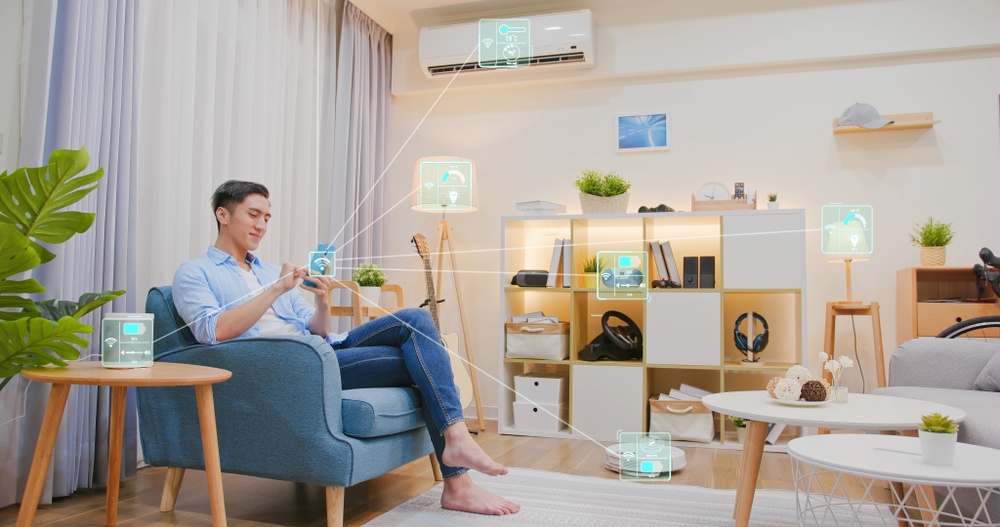Smart home innovations are changing how homeowners live in their homes. With smart home devices, you can control your lights, thermostat, and locks remotely. In turn, you’ll be able to regulate your systems, which can reduce your energy bills without compromising your comfort.
In addition, this interconnection allows you to receive real-time alerts when your kids arrive home from school. This feature can enable a child lock policy that will prevent your children from pressing on advanced devices that might cause electrical threats.
To help you navigate the smart home landscape, here’s a six-item list of tips for establishing a smart residential property.
- Check Home Wiring System
Most homeowners don’t realize that their home wiring is old. This issue means that their electrical systems may not support the new technology required for smart homes. As a result, they often end up having incompatible infrastructure.
If you want to ensure you have the proper wiring, get an electrician from SW Electrical or other providers to come over and install the latest electrical outlets. These experts can help you check if your sockets are working by simply plugging an appliance into each endpoint. They can also help you upgrade your home's electrical system. As a result, you ensure your home works well with a smart home system.
- Ensure You Have The Right Infrastructure
Before installing any new technology, it's best to ensure that your network is up to scratch. If you don't have unlimited bandwidth or high-speed internet connections, it may not be worth investing in more complex smart devices right away. Instead of helping you automate your house, you might be unable to control everything in the system.
So, before buying all kinds of devices, be sure your home has the correct infrastructure. For example, if you want to use voice control or video cameras, you will need high-speed internet access and Wi-Fi throughout the house. Doing so will ensure that devices can communicate seamlessly, especially if you want to add more smart devices soon.
- Choose Your Services Carefully
Another decision you must make as you build your smart home is deciding which services you want to use. There are several different options, from video doorbells to security systems. Thus, if you intend to spend money on this innovation, make sure you know what kind of service it will provide before you buy it.
The best way to be sure your smart home works for you is to choose services that work well together. For instance, if you’re planning on purchasing a virtual assistant device, make sure it can work with other smart products from a similar manufacturer. You can also buy from one brand to build an ecosystem of smart devices that work well for your home. This strategy makes it easier to control everything with voice commands rather than fumbling around with buttons.

- Install A Smart Hub
A smart hub is the brains of your smart home system and lets you control everything from one place. The best ones are easy to set up and give easy-to-understand instructions to connect your devices. Some even come with their app so that you don't need any additional software installed on your phone or computer to use them properly.
When installing a smart hub, you must consider how many devices you want to connect. If you're starting with only one or two devices, it's probably best to opt for a basic home control system. However, if you plan on connecting more than five or six devices, it might be worth investing in an advanced system that offers more features and capabilities.
- Establish A Wi-Fi Backup Plan
The first step in creating your smart home is ensuring you have enough internet bandwidth to support it. If you plan on using several high-bandwidth devices like gaming consoles, you must have multiple ways to access your wireless fidelity (Wi-Fi) network. This tactic ensures there’s no disruption in service if one goes down unexpectedly.
That said, you need to have an alternate plan for getting back online quickly if something goes wrong with your primary network. That could mean setting up a separate network for backup purposes, like a router that includes its uninterruptible power supply (UPS). While this option isn't as convenient as having separate units, it guarantees that your Wi-Fi network stays online during an outage.
- Test Before Installing
Testing your smart home systems is vital to ensure that everything works smoothly. This step ensures that your devices are compatible with your home’s primary and alternative Wi-Fi networks. In turn, you can avoid downtime that can affect your comfort as you use the systems.
For example, if you're installing a security camera, be sure it has night vision capabilities and isn't just recording blank in the dark. Also, read reviews about any product you're considering buying. This tactic will ensure that it's compatible with your smart hub and won't cause problems down the line.
Publisher Website: https://www.staywiredelectriciansydney.com.au/